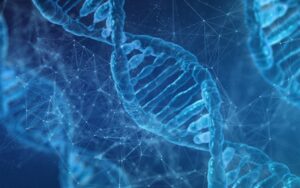Symptoms and signs of female alcoholism
What can and should alert a woman or her relatives in terms of potential alcoholism?
A daily (or slightly less frequent) need for stress relief through alcohol—usually beer or wine. The more often a woman drinks, the faster the tolerance to small doses of alcohol develops, the severity of the antidepressant effect decreases. This leads to an increase in the dose of alcohol, however, in large doses, alcohol inhibits the production of pleasure hormones, and a race of doses begins. Usually, in women, the path to alcohol addiction begins with alcoholism – a bottle of beer after work, a martini with girlfriends in a cafe …; A woman’s attempts to hide her craving (or already formed addiction) to alcohol;
Lack of a critical attitude to one’s behavior during intoxication;
Excuses and attempts to find a more or less acceptable reason for drinking.
If there is at least one of the listed signs, it is worth trying to see the symptoms of the stages of alcoholism. I must say that according to the stages of development, alcoholism in women is no different from alcoholism in men, however, there are some prerequisites for the signs of the stages to be alarming at earlier stages.
The woman herself will not understand how her alcohol addiction began. She will not attach any importance to this, and then she may be afraid to confess to her relatives, because she will be ashamed. There are a number of features of female alcoholism, in which the patient should be taken to the doctor and the problem should be solved immediately. All responsibility lies with the woman’s loved ones. At the first signs of female alcoholism, treatment should be started immediately and psychological support should be provided. It is very rare for a woman to admit to herself that she is addicted to alcohol. Among the symptoms of female alcoholism are the following:
- The desire to drink for no particular reason and no matter what kind of alcohol. Patients are looking for any reason for drinking alcohol.
- Denial and non-acceptance by a woman of the fact of alcohol abuse, a sharp reaction to comments.
- Doses of alcoholic beverages increase over time, a woman gets drunk more slowly from small doses of alcohol.
- Loss of appetite and refusal to snack when drinking an alcoholic beverage.
- Small trembling of the hands, the face becomes more swollen, bags under the eyes, an increase in the abdomen due to cirrhosis of the liver.
- Apathy, loss of interest in everything around and close people. Closure and communication with actively drinking people.
- Rudeness, harsh behavior, cruelty towards close and dear people.
- Slow reaction, decreased intellectual abilities.
- The patient rarely appears at work, can take things out of the house to buy alcohol.
- Drinking alcoholic beverages alone.
The effect of alcohol on the female body is different from the effect on the male. And not for the better. In addition, women get used to drinking faster, and the dose that leads to poisoning is lower for them than for men. What kind of effect alcohol has on the body of the fair sex – in our article.
The effect of alcohol on the female body is different from the effect on the male. With the same dose of alcohol consumed in women, the concentration of ethyl alcohol in the blood is higher. It’s connected with:
- less body weight;
- low activity of hepatic and gastric enzymes that process ethanol molecules;
- a large amount of adipose tissue than liquids (in adipose tissue, the metabolism is slower, so alcohol is also excreted from the woman’s body more slowly).
As a result, most of the alcohol enters the bloodstream unchanged, having a detrimental effect on all organs. In view of this, with prolonged and regular use of alcohol, irreversible and severe changes occur in the body of a woman. Women quickly get used to drinking, and the dose leading to poisoning is lower for them than for men.
Alcohol negatively affects the fair sex in several ways at once. Let’s consider each of them.
Hormonal background
Alcohol affects the hormonal cycle, which is subject to all processes in the female body. Toxins released during drinking affect the adrenal glands. As a result, the production of male hormones begins. If a woman drinks very often, then these hormones accumulate in the body and lead to the following:
- the timbre of the voice decreases;
- hoarseness appears;
- menopause occurs 10-15 years earlier than those women who do not drink;
- movements cease to be smooth and plastic, but become sharp and “angular”.
The effect of alcohol on a woman’s eggs
In a future woman, the reserve of eggs is formed even at the stage of intrauterine development. These cells do not renew themselves like male sperm does. Any negative impact on the body increases the risk of having a child in the future with various abnormalities and defects. Oocytes have a protective sheath of epithelial cells and connective tissue. And one of the few substances that can overcome this barrier is ethyl alcohol. It irreversibly damages the eggs.
Probability of infertility
Drinking women have problems with the menstrual cycle and hormones. From the moment they give up contraception, they take much longer to conceive than healthy women. With a long history of drinking alcohol, the likelihood of infertility is 50% or more higher when compared with those who do not drink.
The effect of alcohol on the skin of a woman’s face
Under the influence of alcohol, rapid changes occur: the skin ages, loses its elasticity, wrinkles appear. The most unpleasant outward sign of alcoholism is large bags and bruises under the eyes. The face becomes puffy, the vessels “crawl out”, swelling is formed. Alcohol is not only stress for the skin, but also dehydration, the destruction of nutrients that are involved in the production of collagen. By the age of 30-35, a drinking woman will look like a 50-year-old with all the listed defects.
The effect of alcohol on the female reproductive system
Each dose of alcohol reduces the chance of conceiving a healthy child and conceiving at all. Possible early menopause. When pregnancy occurs, there is an increased risk of miscarriage and a number of complications both in the process of bearing the fetus and during childbirth.
Breast cancer
American scientists have proven that drinking alcohol dramatically increases the risk of developing breast cancer. There are no “safe” doses. Even 10 g of pure ethanol per day puts a drinking woman at an increased risk of developing breast cancer.
Effect on the brain
Women more often than men do not remember what happened the day before during active libations. The function of the central nervous system is impaired. There is irritability, nervousness, insomnia. Scientists have recorded that under the influence of ethanol, the volume of the brain decreases. Memory worsens, the brain perceives and processes information worse.
Problems with the figure
Alcoholic drinks are very high in calories, especially if sweet syrups are added to them. Beer contains “fast” carbohydrates. They are not consumed, but are converted into body fat. Most often, the waist is modified, hanging sides appear. Alcohol increases appetite and “turns off” the brain’s ability to control satiety. As a result, the woman overeats. With regular episodes of drinking and overeating, the pancreas suffers, acute pancreatitis may develop. Since alcohol reduces collagen production, cellulite appears.
—
In the United States, about 18% of women drink alcohol on any given day. Alcohol consumption is often considered a part of socializing and is often not seen as a problem. However, alcohol consumption has some serious consequences for women.
Alcohol consumption has a number of effects on a woman’s body. It can cause the ovaries to release an egg too early, which leads to an increased risk of infertility and miscarriage. It can also lead to hormonal changes that can cause irregular periods or make it difficult to become pregnant in the future.
The most concerning effect is that alcohol consumption can increase the risk of breast cancer by up to 15%. This is because alcohol causes estrogen levels in the body to rise and estrogen increases breast cancer risk.




